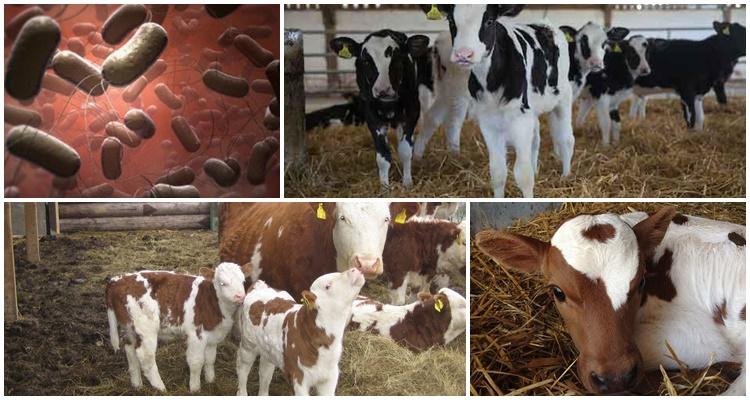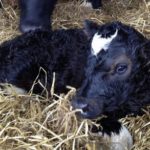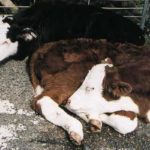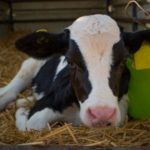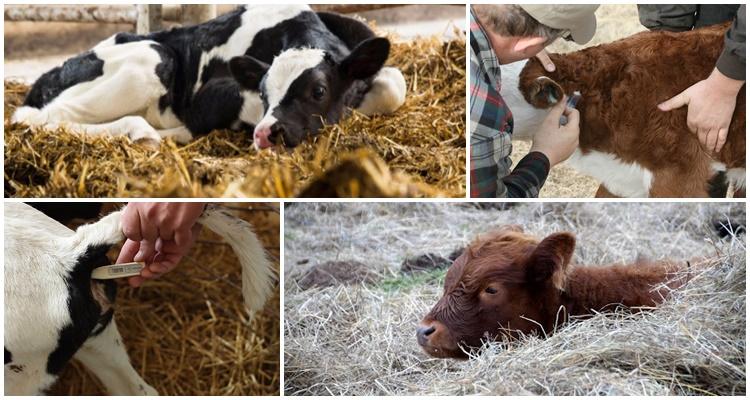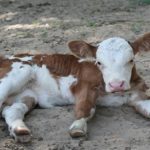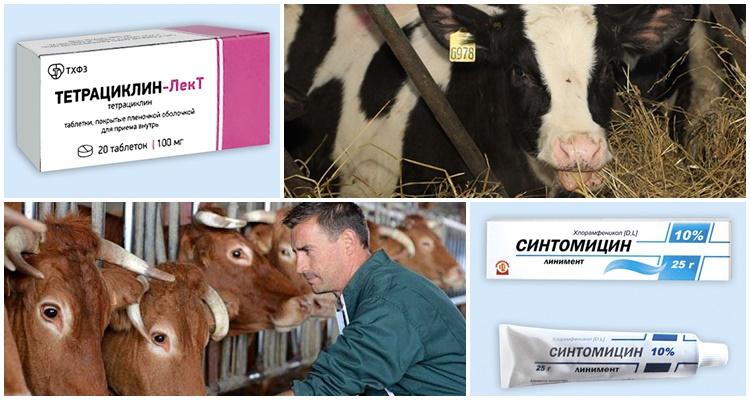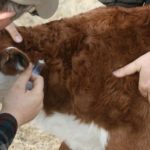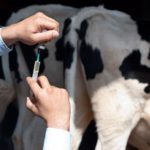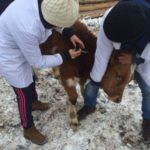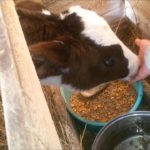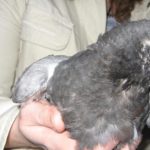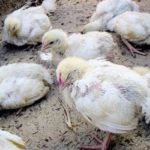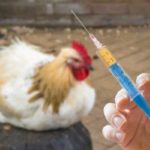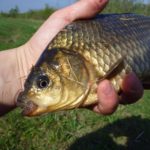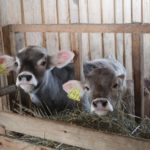Calf salmonellosis is an acute infection associated with infection with dangerous bacteria. In this case, animals develop symptoms of fever and the functioning of the digestive organs is disrupted. In difficult situations, the respiratory organs suffer, including the lungs. To cope with the violation, it is recommended to consult a veterinarian in a timely manner.
Historical background, economic damage
Salmonol and Smith were the first to identify the causative agent of the disease. This happened back in 1885. More often, sexually mature individuals are affected and are capable of transmitting the infection to other animals and people. Salmonellosis is considered a common disease that occurs in many countries, and Russia is no exception. Economic damage is measured by significant mortality of young animals. At the same time, the pathology spreads quickly and in a short time can lead to damage to the entire herd.
Pathogen and causes of the disease
Salmonellosis is caused by small rods - on average, their sizes are 2-4 microns. They have rounded edges. All types of salmonella, which cause damage to young animals, die when exposed to a temperature of 70-75 degrees for 15-30 minutes. Moreover, they are able to withstand freezing for 3-4 months. Salmonella can live in feces, manure and water for several months.
Most often, pathology develops in the spring - during calving. The main cause of infection is considered to be a significant weakening of the immune system in young animals and a violation of the body’s general resistance to various viruses and bacteria. This is due to a lack of vitamins and minerals and unfavorable living conditions.
Salmonellosis is especially dangerous for calves aged 10-60 days. Weak or physically underdeveloped animals suffer first. Infection occurs when a cow that is a carrier of salmonella drinks milk.
Symptoms and course of pathology
Symptoms of pathology directly depend on the form of its course. Moreover, it can be acute and chronic.
Acute form
With acute salmonellosis in calves, the following signs are present:
- general weakness - animals constantly lie or sleep;
- discharge of fluid from the nose;
- temperature rise to 39-42 degrees;
- complete or partial loss of appetite;
- development of diarrhea - observed on days 2-3;
- involuntary leakage of feces - occurs on the 5th day.
With acute salmonellosis, symptoms vary. Sometimes standard manifestations include rhinitis, conjunctivitis, and cough.
Chronic
Chronic salmonellosis has approximately the same symptoms. However, arthritis is also added to them. This form of pathology occurs in the absence of adequate treatment of the acute process. In this case, chronic salmonellosis can be present for 2-3 months. This is why it is so important to start therapy in a timely manner. In cows, the disease can be practically asymptomatic, since their body is more resistant to the disease.
How is the disease diagnosed?
It is important to carry out a differential diagnosis of salmonellosis with dyspepsia, pasteurellosis, and colibacillosis. It is also important to distinguish pathology from diplococcal or streptococcal infection. It is recommended to make a comprehensive diagnosis.
In this case, it is worth taking into account the epizootic situation. Symptoms, data from bacteriological examinations and serological tests are of no small importance.
To make an accurate diagnosis, it is recommended to send samples of the liver, spleen, lung tissue, and gall bladder to the laboratory. To identify the carrier, examination of the liver and spleen is required. To make a diagnosis during life, it is worth studying stool and blood.
Rules for the treatment of salmonellosis in cattle
Timely assistance will help prevent the mass death of animals and achieve a full recovery. In this case, it is recommended to carry out complex therapy. Its main tasks include the following:
- suppression of bacterial microorganisms;
- elimination of symptoms of intoxication;
- normalization of the digestive organs.
Before starting treatment on sick calves, it is recommended to do the following:
- isolate the sick animal in a separate room;
- provide the calf with a diet;
- create a suitable microclimate in the room - humidity, ventilation, temperature are important;
- introduce vitamins and minerals into your diet that help strengthen your immune system.
Antibiotics
One of the most effective methods of combating salmonellosis is the use of antibacterial agents and sulfonamides. Before administering a drug, it is imperative to evaluate the animal’s reaction to it. Most often, Levomycetin is used for salmonellosis. It is recommended to use it in a volume of 0.04 grams per 1 kilogram of body weight. Before use, the composition should be mixed with water and fed to the calves. It is recommended to do this 3 times a day. The course of therapy lasts 2-3 days.
It is also permissible to use Tetracycline for this diagnosis. The substance is given to calves in a volume of 0.02 grams per 1 kilogram of weight. Sintomycin is no less effective. At the same time, 0.02-0.04 grams should be used per 1 kilogram of body weight.
This therapy option is especially effective for chronic salmonellosis. With its help, it is possible to avoid the occurrence of pneumonia. In this case, the dosage of sulfonamides on the first day of treatment should be 0.1 grams per 1 kilogram of body weight.
Antitoxic serum
On the first day of therapy, a polyvalent antitoxic serum must be used. It is made on the basis of immunoglobulins and antitoxins from healthy animals.In this case, the drug is combined with antibiotics from the tetracycline group. It promotes the formation of passive immunity to pathogens.
When treating calves, it is important to strictly follow the instructions for use. The drug is recommended to be administered intravenously or intramuscularly. In this case, animals up to 10 days are given 5-10 cubic centimeters of serum. Calves are administered 20 cubic centimeters of the drug for 10-30 days. To achieve maximum effect, the daily volume should be divided into 3-4 times. Serum helps neutralize the activity of bacterial microorganisms, while antibiotics help avoid the occurrence of pneumonia.
In what cases is the vaccine indicated?
An effective method for preventing the development of salmonellosis is vaccination of calves. Several types of remedies are used to prevent the disease. However, for calves the best option is the formolalum vaccine. It is worth getting vaccinated in the first 2-3 days of life. In this case, it is recommended to administer the drug subcutaneously - in the neck area. After 3-5 days the procedure is carried out again.
Timely vaccination of pregnant cows is of particular importance. They should administer the medicine in 2 doses, with an interval of 8-10 days. The first time it is recommended to administer 10 cubic centimeters of the drug, the second - 15. Pregnant heifers are vaccinated 50-60 days before giving birth. The effect of the drug lasts 6 months. Then the injections must be repeated. It is recommended to buy the vaccine only in special stores or veterinary pharmacies. When using the drug, it is important to strictly follow the instructions. It is worth considering that after vaccination, the calf’s immunity does not develop immediately - this happens only after 10-12 days.
Preventive actions
Treatment of salmonellosis is considered quite difficult. It is easier to prevent the occurrence of pathology. To do this, you should adhere to the following rules:
- follow veterinary and sanitary recommendations for keeping calves;
- systematically treat premises with disinfectants;
- avoid accumulation of waste products in pens containing cattle;
- properly staff the herd;
- provide animals with sufficient water;
- actively fight rodents and other pests;
- promptly isolate infected individuals;
- Vaccination on time.
Salmonellosis is considered a dangerous disease that can lead to the death of calves. Therefore, when the first signs of illness appear, it is recommended to immediately contact a veterinarian. To avoid the onset of the disease, it is worth getting vaccinated on time.

